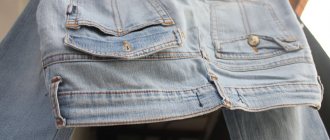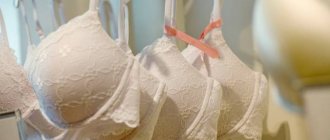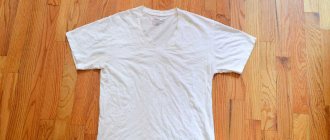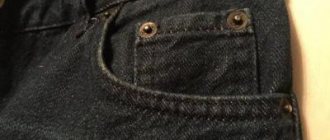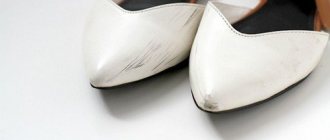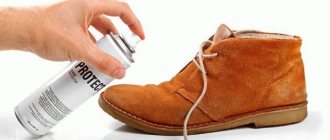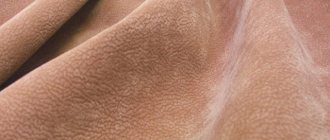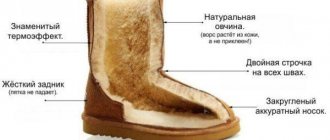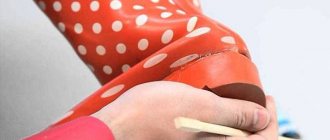Snow-white sneakers have a huge number of admirers. They never go out of style, look equally impressive with trousers, jeans or dresses, and go with almost any color of clothing. To ensure that new pairs do not lose their relevance, only one thing is required: they must remain truly white. Sprinkles of dust and yellowness spoil not only the appearance, but the entire image as a whole.
Here are simple tips that will help keep white models attractive without much effort or financial investment.
Starting point - purchase
If you start taking care of the new product a couple of months after purchase, then you can forget about the ideal white color. Unlike stilettos, sports shoes can be worn all day long. Therefore, it wears out quickly, the noses become confused over time, and creases form on leather models. Even with the most careful wear, dust cannot be avoided from getting into the resulting cracks.
Having become the owner of a new pair of white shoes, you should immediately purchase shoe brushes and special impregnation. This will protect the sneakers from aggressive external influences.
We take out the paint
If paint gets on white shoes, the above remedies will not help to deal with it. Special components will be required. It can be:
- "White Spirit";
- nail polish remover;
- acetone.
We recommend: How to reliably protect and clean shoes from traces of reagents?
Soak a cotton pad in any of these liquids and wipe the paint stain several times.
Remove paint from leather models with a soda solution (a teaspoon in half a glass of water). If the stain is too old and stubborn, you will have to purchase white shoe paint and repaint the sneakers. Or use dry cleaning services.
The composition of the fabrics used to make sneakers may vary. Accordingly, their reaction to certain detergent components is quite difficult to predict. Therefore, before using, be sure to try their effect on an inconspicuous area of the sneaker.
Once stubborn dirt has been removed, you can begin washing your shoes.
Proper preparation
It is important to acquire the right set of “tools” for whitening.
- A brush with soft or medium-hard bristles provides gentle cleaning of dirt, while a hard one provides effective cleaning.
- A special brush for working with seams perfectly complements the cleaning arsenal.
- A soft cloth, preferably microfiber, is indispensable when bleaching.
Before cleaning, it is recommended to remove the laces and insoles. If there is too much dirt, it is better to wash it. The main thing to remember is that the products must be dry before bleaching.
Whitening white leather sneakers at home
The shining whiteness of leather shoes is a puzzle with an asterisk. It is forbidden to use bleaches to cleanse the skin, and many folk remedies will harm the soft material.
We recommend:
How to clean a natural sheepskin coat at home
Preparatory stage
The fight against yellowness begins with washing off surface contaminants. Sneakers are wiped with a damp cloth or quickly rinsed under running cool water. Then the shoes are dried with a dry cloth and left in the open air for a while. Once completely dry, the sneakers can be bleached.
What is the best way to bleach leather sneakers?
Simple methods include using baking soda and vinegar. The substances are mixed in a 1:1 ratio, then the resulting mass is applied to the skin. It is important to do this as quickly as possible while the mixture is sizzling. The released gas bubbles will push out dirt, baking soda will have a bleaching effect, and vinegar will defeat the unpleasant odor. Purchased products are also suitable:
- natural cream Plak;
- Super White Tarrago;
- Dividic cleaner.
Whitening instructions
Leather shoes should not be rubbed with a brush. A soft but dense fabric that cannot damage the top layer of material is best. It is forbidden to dry the product in the sun or near a radiator - this will lead to dryness and cracking. Do not get leather sneakers too wet, as this may cause them to lose their shape. Particular care should be taken when bleaching artificial materials.
Different materials - different care
The most popular materials from which sneakers are made are suede, textile, mesh, natural or artificial leather. Each of them has its own advantages. Suede has a velvety surface, it is resistant to wear, and creases rarely form on it. The lightweight textile model perfectly ventilates the leg, secures the foot, and has an unusual design. Leather has a porous structure, durability, and elegant appearance.
Each material has its own approaches to whitening at home.
Models made of genuine leather
- White toothpaste works wonders. Add a few drops of lemon juice, whiten your shoes with this mixture using an old toothbrush, and wash with a damp cloth. The reward for your hard work is the enjoyment of perfectly clean sneakers.
- Regular baking soda is excellent at removing stains. The recipe is simple. Mix soda with water, apply to the surface, rinse with a sponge after 15 minutes. This method will help to qualitatively whiten natural skin, and you always have baking soda on hand.
- If the contamination is weak, then a quarter glass of full-fat milk diluted with an egg will help remove it. Lightly wipe the leather item with a cotton pad, then rinse with water at room temperature.
- Another effective way is to combine potato starch with milk. Measure out a tablespoon of each, spread over the surface, allow to dry naturally, and remove the residue with a sponge.
Suede sneakers
In order for suede to retain its original beauty longer, it requires special care. For example, this material does not like moisture. To clean it, it is advisable to use a soft brush, lifting the pile. The most ordinary eraser also helps to remove dark spots.
How can you effectively whiten suede sneakers?
- Hydrogen peroxide is the best remedy for combating dark spots. A mixture of equal parts water and peroxide is effective.
- Baby powder helps restore the freshness of the suede surface, ridding the fabric of greasy stains. Starch has the same effect. Everything ingenious is simple: sprinkle these products on the stain, wait a few hours. For particularly difficult stains, it takes a whole day for the sneakers to become like new again.
- It is not difficult to give suede its original nobility. Moisten a rag with a mixture of milk and a few drops of ammonia, bleach thoroughly, then dry.
- The salt stains that form in winter spoil even light-colored sneakers. To get rid of them, you need to mix water and citric acid one to one, dip a rag in the resulting mixture, and wipe the stains on your shoes with it.
Fabric models
Fabric materials get very dirty, let alone light-colored textiles. Since it quickly loses its attractiveness due to frequent washing, it is better to exercise in rag models in fitness centers or gyms.
- Rule number one: do not use white, it will turn the fabric yellow.
- The use of toothpaste described above is an excellent opportunity to whiten cloth sneakers at home.
- Soaking in the foam formed from a grated piece of laundry soap is effective for no more than forty minutes. True, it is not recommended to bleach cheap specimens in this way.
- The real enemies of dirty textiles are washing powder, dishwashing liquids, and any cleaning products suitable for fabrics.
Mesh inserts
Whitening the mesh is not difficult if you know three or four little tricks. Aggressive substances negatively affect mesh inserts, so the following soft mixtures will be good helpers:
- Soap suds plus a small amount of stain remover.
- A weak solution of vinegar and acetone.
- Dish gel mixed with baking soda.
How to whiten synthetic sneakers
Synthetics are moisture resistant, lightweight, and affordable. Some synthetic parts are created specifically to increase shock absorption during movement and stabilize the foot.
It’s very easy to bleach synthetics yourself:
- A solution of laundry and tar soap quickly copes with the task.
- The properties of baking soda are again surprising. Together with vinegar, it is applied to a damp sponge, cleans all dark spots, then rinsed off.
- A fifteen-minute wrap in a Vaseline-soaked cloth will take care of a lot of “dirty” tasks.
Preparatory stage
So that your efforts are not in vain, and the washing procedure does not have to be repeated several times, you should properly prepare for how to return the whiteness to your sneakers.
Laces
Never wash or wash shoes with laces. They need to be pulled out, cleaned separately with a brush or washed by hand. If they are too dirty, apply laundry soap and let them sit for a couple of hours.
You can add a stain remover to hot water and leave them to soak in this liquid for several hours, and then rinse. If the laces become gray or yellowed, replace them - they spoil the appearance of the shoes.
Insoles
Pull out the insoles and evaluate the appearance. If they are cracked or have any defect, replace them. Normal insoles should be wiped with a damp cloth and placed on a flat surface to dry. It can be treated with special talc, which kills germs and foreign odors. Alternatively, wipe with a vinegar solution.
Sole
Examine it. If there is dirt or small stones in the tread pattern, remove it. If chewing gum is stuck, you can pry it off with a knife. To make the elastic easier to separate, apply a rag with ice to it.
After this, take an old toothbrush and laundry soap and thoroughly rinse the entire sole.
How to whiten yellowness
Direct sunlight, unclean or rusty water on city streets lead to yellow discoloration on your favorite sneakers. Some cleansers play a negative role. Yellow tints can appear after washing at temperatures above 40 degrees, and also because the pores of the leather are clogged with particles of shoe polish.
Yellowness is difficult to get rid of; it is much easier to prevent it.
- Using chlorine-free washing powder is a great solution.
- Preference should be given to gels for light-colored items, as they leave fabric fibers more freely.
- One third of a teaspoon of citric acid added to the rinsing compartment of the machine makes a significant contribution.
If any areas have turned yellow, hydrogen peroxide will mercilessly combat this problem. Soaking in cold water is another easy way out. Proper drying is required for the effectiveness of all of the above actions.
Washing options and drying features
There are two ways to tidy up your shoes. Both machine and hand wash are acceptable.
- In the typewriter. Sneakers are placed in a special bag for washing shoes and sent to the drum. You need to select the “Shoes” or “For shoes” mode. If there is no such mode, turn on “Delicate wash” or another cycle with a minimum temperature and spin speed. How to wash white sneakers without them turning yellow? Add bleach when washing, just make sure it is chlorine-free. Wash separately from other shoes to avoid shedding.
- Manually. To wash white fabric sneakers by hand, pour water into a bowl, add laundry detergent, and lather. Leave the shoes in the solution for a couple of hours. Hand wash and then rinse thoroughly. You need to rinse with plenty of water if you want to wash your white sneakers without streaks or stains. Let the water drain and send the shoes to dry.
You should not dry your shoes by intensive spinning in the drum of the machine, or on a radiator or in the sun. All this ruins the sneakers. Let them dry naturally - in the fresh air, in the shade. Stuffing your shoes with toilet paper will speed up the process.
How to keep white soles flawless
It is the sole that is responsible for walking comfort. It absorbs load, provides thermal insulation, stability, and excellent shock absorption. But modern fashion evaluates not only the functional qualities of the sole. Color, shape, thickness, in other words, its appearance are of great importance.
Sneakers with snow-white soles are the undisputed trend of the current season. They are stylish, elegant, beautiful. The advantages are obvious, but there is a well-known disadvantage. Dirt on such a sole accumulates much faster. Here are six ways to help restore the original shine:
- Yellowed soles are cleaned using the well-known formula: acetone plus vinegar.
- A concentrated soap composition gets rid of stubborn grayness. Half an hour of exposure will be sufficient.
- A school grater perfectly cleans the grooved sole, but for a good result you will have to make an effort.
- A damp melamine sponge tackles difficult areas like magic.
- Active wiping with a cotton wool soaked in kerosene allows you to achieve a high effect.
- A napkin soaked in ethyl alcohol removes black streaks.
Another life hack: when the cleansing procedures are completed, the next important step is drying.
Around the battery, drying occurs unevenly, the membrane properties are lost, the adhesive base is destroyed, and the product is deformed. It is enough to stuff it tightly with white paper and let it stand quietly at room temperature. If there are only a few hours left before training or jogging, then use a regular household fan.
Reasons for losing the snow-white color of shoes
Before you start getting rid of dirt, you should find out the reasons for the loss of the snow-white color of your shoes:
- Leather products
- in such models, socks very quickly come off and marks from the black sole remain. These shoes lose their color due to water, dirt and dust. - Sneakers
are sneakers made of leather and leatherette. In sports shoes, creases often appear, into which dirt and dust constantly fall. - Fabric shoes
- such models may lose their color after the first walk. They absorb street dust very quickly. The white edging and threads with which the shoes are sewn can darken not only from dust, but also from professional products.
Remember!
Always treat new shoes with water-repellent agents to avoid contamination.
Important nuances
Before you start bleaching your white sneakers, you need to find out what material they are made of. Shoes can be made of natural and artificial leather or fabric. Summer models often have mesh inserts that provide additional ventilation. The sole of the shoe can be made of polyurethane or other polymer material.
It is necessary to choose a bleaching method taking into account the material of manufacture. So, many people simply wash fabric sneakers in a washing machine with the addition of bleach. It is dangerous to immerse leather sneakers completely in water; the shoes may become warped.
Do not clean polyurethane soles with organic solvents; such treatment can destroy them.
You need to air dry any shoes; you cannot use a hairdryer or put a pair on the radiator. Drying at high temperatures will warp your shoes.

